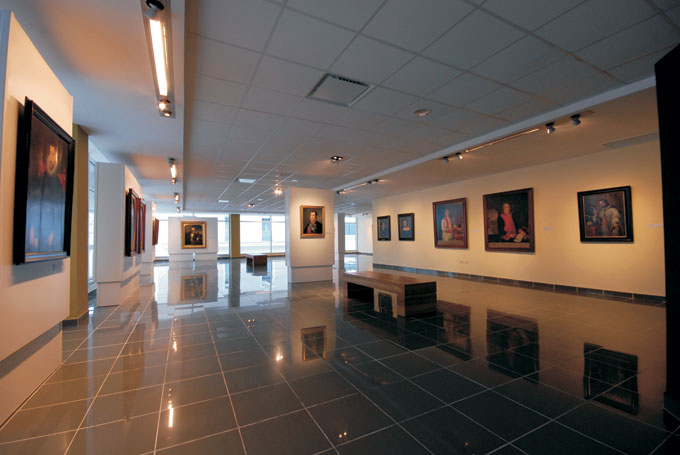José Nicolás de la Escalera y Domínguez (1734 – 1804), his paintings

This pioneer, a mulatto, known simply as Nicolás de la Escalera, was born on September 8, 1734, in Havana; he died on July 3, 1804. He was of Andalusian descent on his father’s side, but his mother was Creole. In the history of Cuban painting, he is the first to leave behind a body of work that has largely survived to this day, open to study and appreciation. Self-taught, it is possible, however, that he received the rudiments of art in a convent in the city. His style shows the influence of the Spanish artist Esteban Murillo, some of whose works reached Cuba, and, in general, of the 17th-century Spanish school, to which he had greater access for logical reasons, given the prevailing cultural ties between the colony and the metropolis.
The first piece to come out of his hands was a portrait of Luis Vicente Velazco, a naval captain who had bravely fallen in the defense of the Morro Fortress during the Capture of Havana by the English. This was sent as a gift to King Charles III by the painter himself. From that moment on, one of the main facets of Escalera y Domínguez’s work would be that of portraitist, as well as the religious aspect. His most significant works have this character, in particular the four pendentives of the Cathedral of the Fields of Cuba, in Santa María del Rosario, Havana, according to researcher Ursulina Cruz Díaz. [Cruz Díaz, Ursulina. Biographical Dictionary of the Plastic Arts. Havana: Editorial Pueblo y Educación, 1996, p. 129.
]
This church, which was built with the support and funding of the Counts of the House of Bayonne, also houses the following works by the painter: Glorification of Saint Dominic, Saint Dominic de Guzmán, Saint Francis of Assisi, Our Lady of the Rosary, and Saint Teresa. His religious sense was authentic, especially his devotion to Saint Dominic de Guzmán, an aspect that is reflected in the expressiveness of his images. However, it should not be forgotten that in many cases his pieces were copies of those of other foreign painters, created based on commissions from religious congregations and orders seeking to enhance the splendor of their churches, at a time when, in the eyes of some, painting was still considered a mere craft.
His portrait of the family of the Count of the House of Bayona, Don José Bayona y Chacón, has gone down in the history of artistic representations of Cuban society, as the first to feature a black person. This was a slave owned by the family, who had apparently helped cure his master’s illness, using the therapeutic properties he attributed to the springs that ran on the estate’s land. This can be cited as one of the earliest antecedents of costumbrismo (costumbism), in terms of the contrast between the scene and one typical of European nobility, although the inclusion of the slave did not respond to a direct motivation of the artist but rather to the Count’s request.
His body of work includes pieces on display in museums or in the hands of private collectors, notably Messrs. Mingoanse, Mendiola, and Antonio García Hernández. Mendiola’s collection includes The Magdalene, among other pieces. García Hernández’s collection also included Saint Joseph and Child, Saint Anthony, Saint Alipio, and a Don Luis de las Casas. However, his best-known representation of Don Luis de las Casas was in the Casa de Beneficencia. Three of his works are on display in the National Museum of Fine Arts of Cuba. As one of the first Cuban artists to dedicate himself to the fine arts, well into the 18th century, the so-called Age of Enlightenment, Nicolás de la Escalera’s work should not be praised for its artistic value per se, but rather for the paths it began to forge in Cuban painting.








